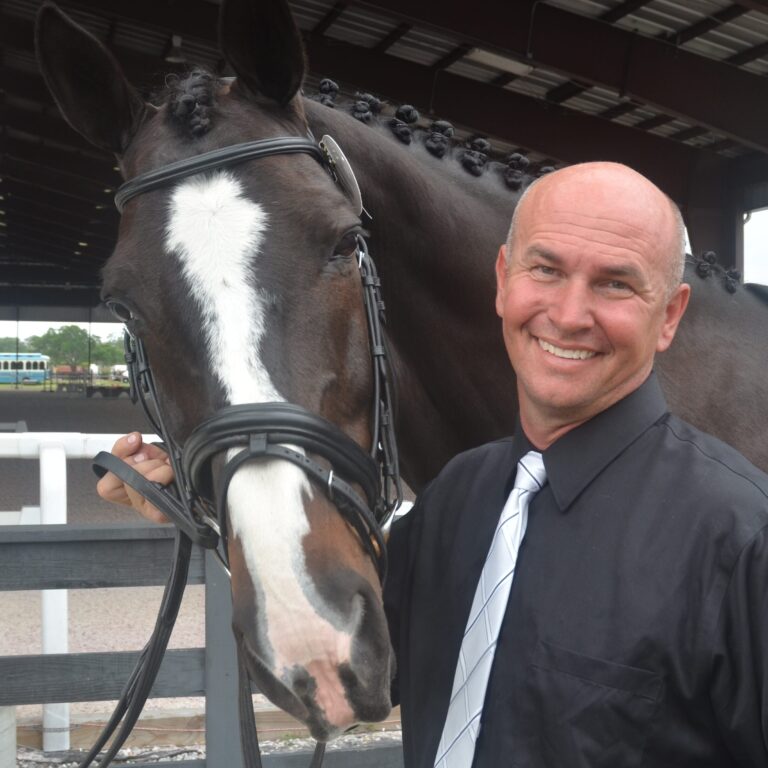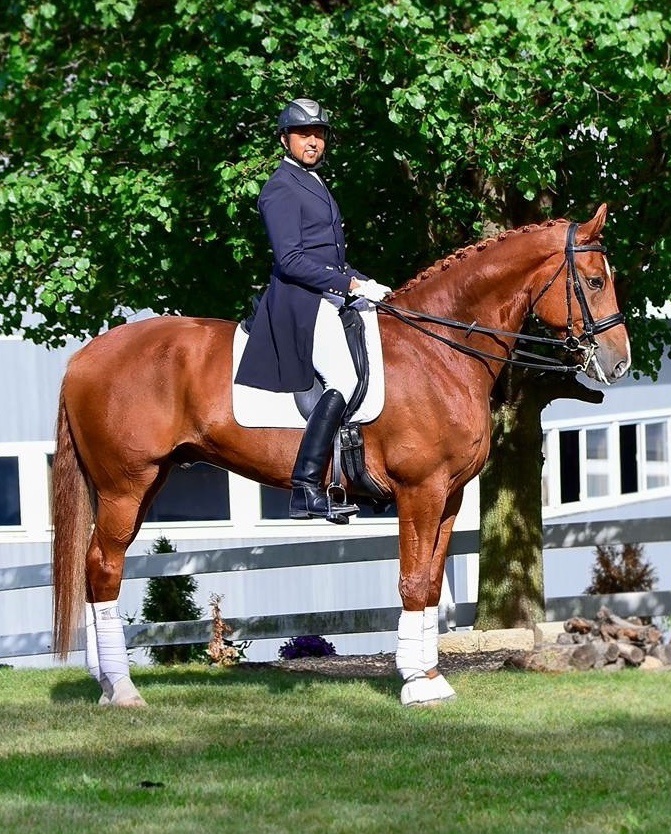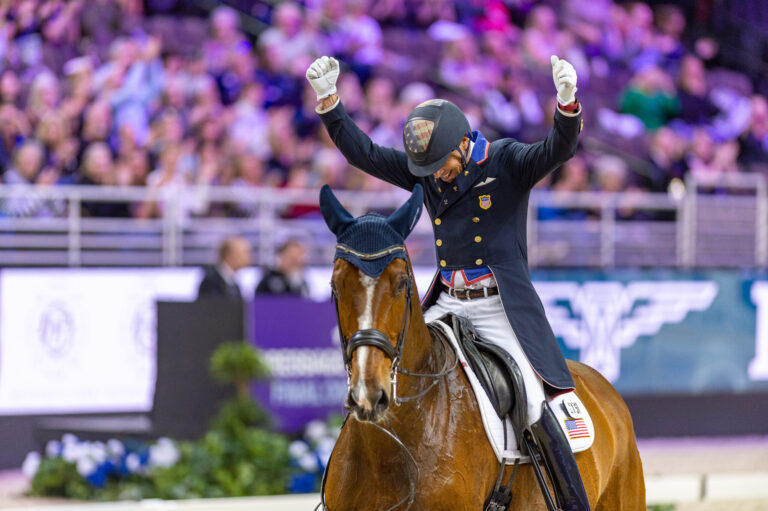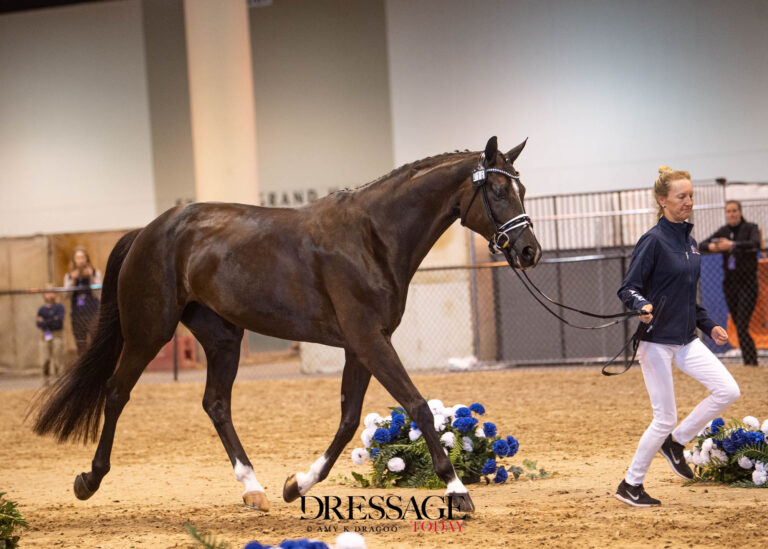Q: I am a Second Level dressage rider. There is a huge crowd of hunter riders in my barn. I would like to get some of the girls more interested in dressage. They think that as a dressage rider I’m from a different planet. Do you have tips on how to make dressage more attractive to hunter/jumper riders, especially teenagers/younger riders? —Name withheld by request
A: To the uninitiated, watching a dressage lesson of endless 20-meter circles with mysterious cues like “half halt” and “add left flexion” or “use your left leg to improve connection through the right outside rein” might seem strange, boring and tedious. The trick, I think, to encouraging riders in other disciplines to explore dressage is to help riders feel how dressage training positively affects not only the horse’s way of going but also their ability to communicate with the horse.
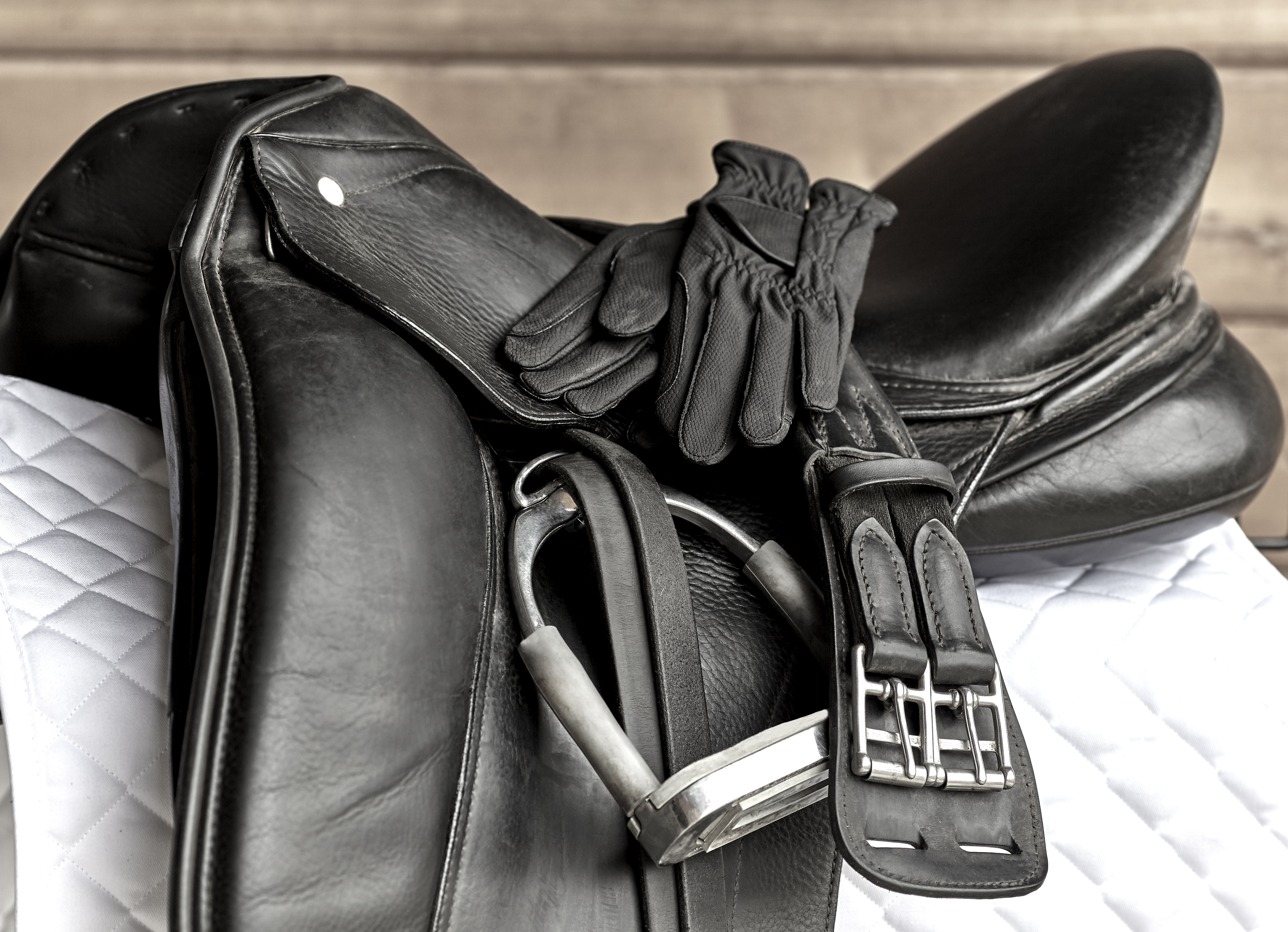
Dressage can be described as dance lessons for horse and rider. As a rider, think of the benefit you get from learning to dance—ballet or ballroom, it doesn’t matter. Dance lessons develop your sense of rhythm, balance and coordination—all valuable skills for riding effectively. Dressage helps these same skills develop in your horse. Basic moves such as large, smooth circles, balanced transitions and maintaining a steady tempo in all gaits, help your horse develop a steady rhythm, balance and coordination as well.
A more subtle benefit of dressage is that it offers the opportunity for the rider to explore how the horse moves at each gait and how the rider moves with the horse at each gait. In my experience, compared to dressage riders, hunter/jumper riders ride in a more forward position in the saddle with their weight rarely being solidly down in the saddle. This is, of course, appropriate for riding a jump course. But learning to sit more deeply in the saddle helps the rider feel what is going on underneath her. A stable position of the pelvis in the saddle allows suppleness and movement at the rider’s hip joints so she can feel how the horse’s back and body move at walk, trot and canter. By moving precisely with the horse at each gait, the rider can then influence the gait, i.e., increase or decrease or steady the tempo or increase or decrease ground cover. Riding then becomes more refined on the flat or over fences.
Dressage exercises can be incorporated into work over fences. For example, let’s say a rider is schooling fences separated by eight or more strides. Suggest or try the following sequence to improve communication, connection, responsiveness and control:
Ride the first fence. Between the fences, establish a 15- or 20-meter circle at canter. Stay on the circle in canter until the canter is under control—it’s the rider’s canter, not the horse’s. Then ride an organized and balanced transition to trot and stay on the circle in trot until the trot is balanced and steady. Ride an organized transition back to canter. Stay on the circle until you have the horse cantering with you. Then ride the second fence.
The goal with this exercise is to use the control, feel and connection from dressage to improve communication while riding over fences.
Dressage exercises develop basic skills needed for smooth negotiation of a jump course. Are there problems with lead changes? Dressage exercises can develop the horse’s balance and coordination to improve the canter and, hence, the quality of the changes. School canter–walk–canter transitions to gain balance and engagement in the canter. Practice counter-canter for balance and keeping the horse listening to the aids. School steady and balanced 10-meter circles for strength and connection.
Are there difficulties rating the horse before the fence? Suggest or practice within-gait transitions to improve the horse’s responsiveness to driving and restraining aids. Establish a working canter on a 20-meter circle. Ask the horse to canter more forward for a few strides. Imagine that the more ground-covering gait comes from the horse’s hind legs swinging more underneath his body (not from diving on his forehand). Then ask the horse to come back to your original working canter. Use your body to steady the gait (don’t go so forward) with help from the reins, but keep your leg on to keep activity in the canter and to prevent the horse from breaking into trot. If the horse braces against the bridle, make the down transition while on a smaller circle. Practice this forward–back exercise until it can be done smoothly with imperceptible aids. Then try the same transitions on a straight line.
Dressage provides a training foundation for any riding discipline. By exploring the benefits of these basic exercises, the hunter/jumper riders may realize that they have been doing dressage all along!
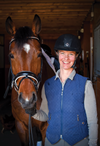
Beth Glosten, MD, is a USDF bronze, silver and gold medalist and a USDF “L” Education Program graduate with distinction. Retired from medicine, she operates her RiderPilates® program, teaching private and group Pilates classes and rider-position-focused lessons, including skills to improve function and balance. She is the author of Ride in Balance—Expand Your Riding Skills With Body Awareness and Pilates Exercises. She is based in Redmond, Washington (riderpilates.com).


